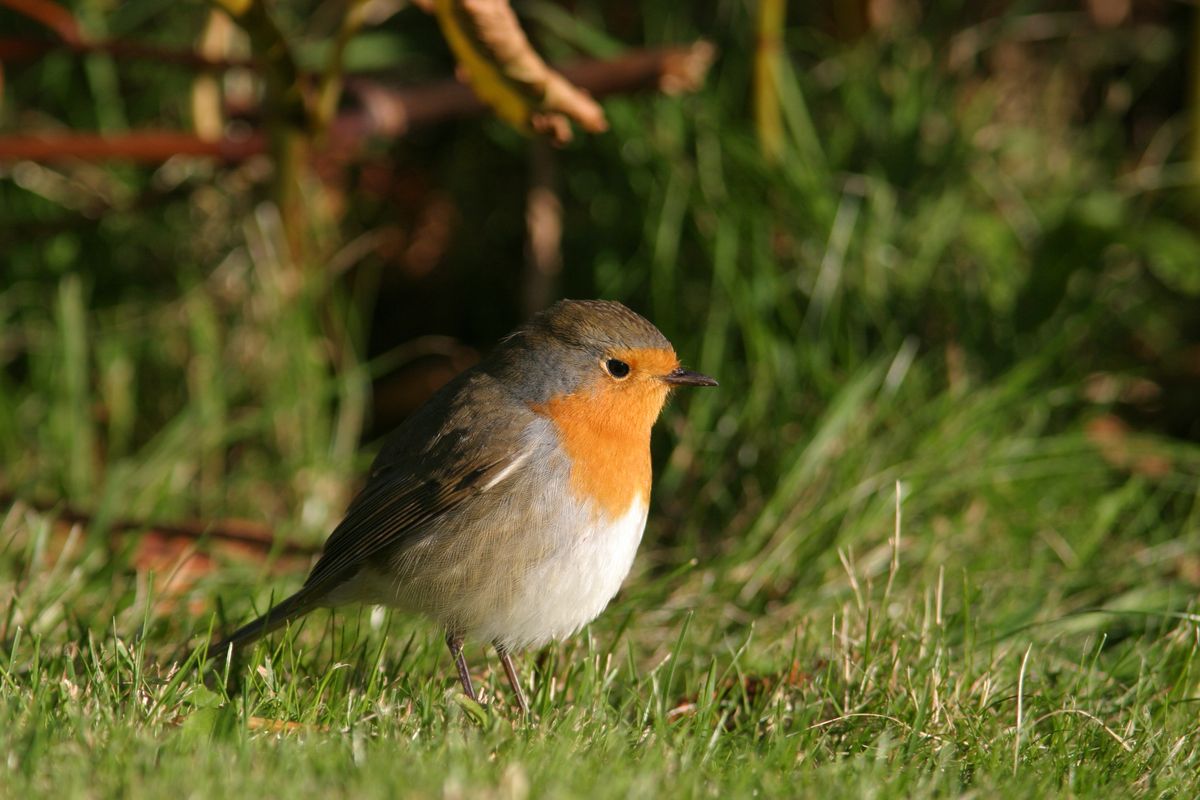Repeated experiment failures have led to a most unexpected discovery about how songbird orientation may rely on the quantum phenomenon of electron spins. Researchers found out that very weak electromagnetic fields disrupt the magnetic compass used by European robins and other songbirds to navigate using the Earth's magnetic field.
Neither power lines nor cellphone signals are to blame for the electromagnetic field effect on the birds, according to the new study published in the 8 May 2014 edition of the journal Nature. Instead, the culprits consist of frequencies between 2 kHz and 5 MHz, such as AM radio signals and ordinary electronic equipment that might be found in businesses or private homes.
The discovery came about when researchers at the University of Oldenburg in Germany attempted to set up a typical experiment on the magnetic sense of birds, according to National Geographic's Phenomena blog. But the European robins they used in the studies kept flying in random directions rather than using their magnetic "sixth sense" to find their bearings—until the team came up with the idea of putting a Faraday cage around the birds' windowless huts to block the effects of nearby electromagnetic fields. Suddenly, the birds could navigate using their magnetic compass once more.
Researchers repeatedly tested the surprising finding for several years and added certain electromagnetic fields to test the sensitivity of the birds. That allowed them to narrow down the troublemaking frequencies to the 2 kHz - 5 MHz range, even if they couldn't pinpoint the devices or signals operating at such frequencies. Such background human-made noise is expected to be most disruptive for migrating birds flying above urban areas.
The surprise findings have left several mysteries for researchers. Such electromagnetic fields are much weaker than the lowest exposure limits recommended for humans by the International Commission on Non-Ionizing Radiation Protection (ICNIRP), and are also weaker than the minimum levels at which researchers expected any biophysical effects.
The results also support an intriguing idea about how quantum physics plays into the workings of birds' navigational systems. As Phenomena's Ed Yong explains, bird eyes contain a molecule called cryptochrome that can pass an electron to a nearby molecule when struck by light. The result is two unpaired electrons that can flip between up and down spin states—a quantum physics phenomenon. The Earth's magnetic field can influence the spin states in the pair of molecules and thereby trigger different chemical reactions.
Other experiments have shown that birds will ignore their magnetic compass and navigate according to the sun or stars under certain circumstances. An accompanying news article in the journal Nature suggests that birds may have evolved to learn when to ignore their disrupted magnetic compasses because of solar magnetic storms. Such storms occasionally disrupt the Earth's magnetic field and generate radiation at frequencies ranging from 20 kHz up to the MHz range—a range strikingly similar to the frequencies shown to disrupt the magnetic compass of birds.
Jeremy Hsu has been working as a science and technology journalist in New York City since 2008. He has written on subjects as diverse as supercomputing and wearable electronics for IEEE Spectrum. When he’s not trying to wrap his head around the latest quantum computing news for Spectrum, he also contributes to a variety of publications such as Scientific American, Discover, Popular Science, and others. He is a graduate of New York University’s Science, Health & Environmental Reporting Program.



